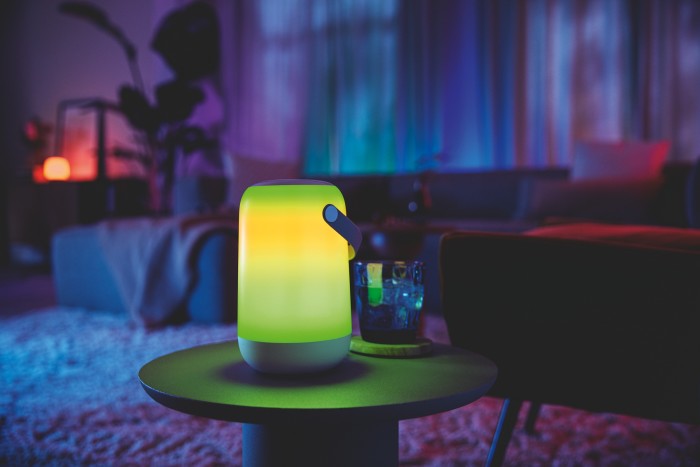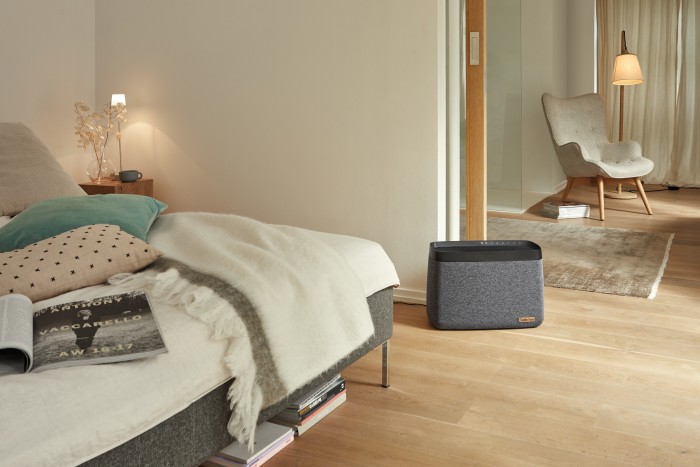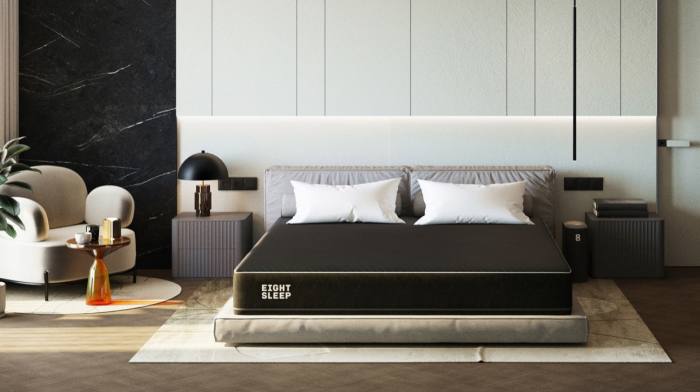The way that smart lighting can transform a home into an array of beautifully illuminated stages is hard to appreciate until you’ve taken the plunge. Forest-tinged utility rooms, living rooms in party mode and bedrooms with simulated candlelight are all a couple of taps away, and adjustable on a whim. WiZ lights come from the same company – Signify – that produces the market-dominating Philips Hue range, but they’re pitched at smart lighting newbies: easier to set up, a cinch to control, but with huge flexibility.
The main advantage of WiZ over some other brands – including Hue – is that they don’t need a dedicated hub; set-up just requires you to enter your WiFi password into a smartphone app. After that, you’re given granular control over any WiZ lights in your home: their color (static or dynamic), automation (on/off times, or perhaps gentle fades over the course of a day) and scenes, where favorite combinations of color and brightness can be recalled quickly and easily.

The WiZ range includes spots, bars, string lights and bulbs, but I was particularly taken with this mobile portable light, an attractive and handy piece of kit that can double as a soothing nightlight for kids, a dazzling garage illuminator, a centerpiece of a garden dining table and so on. I ended up buying two to use as dimmable bedside lamps; you can swipe the top panel to adjust brightness, or tap to turn on and off without ever having to reach for a smartphone.
When you do venture into the newest version of the WiZ app, however, there’s an innovation I hadn’t seen before called SpaceSense: by sensing tiny disruptions in the WiFi signal, two or more WiZ lights can tell when you are in a room, automatically turn on when you arrive and turn off again shortly after you’re gone. No additional sensors needed. The crowning glory is the interoperability with Amazon Alexa, Google Home and Matter, which means connectivity with Apple’s HomeKit framework. It just remains for me to welcome you to your new role of domestic lighting designer. Wiz Mobile Portable Light £79.99
Not a dry eye
In winter, low indoor humidity can be a silent menace; levels can drop below 30 percent, and watery eyes and scratchy throats abound. Swiss brand Stadler Form – which, touchingly, gives human names to their products – presents Karl and Karl Big, two energy-efficient humidifiers that deal with the problem consummately.

Karl Big has an 11-liter tank and handles rooms as large as 150sq m, while Karl packs about two-thirds of the punch of his brother. They are adjustable via the panel or an app, and their power settings range from one (virtually silent, perfect for overnight operation) to Turbo (boosts humidity levels fast). Unusually for humidifiers, they look great. Stadler Form Carl$249, and Karl Big$379
Got you covered
Regulating your overnight temperature generally means sticking a leg out or donning bedsocks. EightSleep’s system is much smarter and consists of an Active Grid mattress cover that silently moves cooled (or warmed) water underneath you, maintaining an optimum temperature. The hard work is done by a hub that sits nearby and transfers water from its internal tank as necessary.

EightSleep Pod 3 Cover, £2,195 (double) to £2,495 (super king)
Over a few nights it assesses your thermal needs and lets you set different temperatures for each side of the bed. Data flows as freely as the water; movement, heart and respiratory rates combine to give a detailed picture of sleep health, all accessible via the app. EightSleep Pod 3 Cover, £2,195 (double) to £2,495 (super king)
Quick on the draw

Civilization has, thus far, coped admirably without automated curtains, but there are many reasons – security, accessibility, sheer laziness – why they’re a great idea. Switchbot makes two models (Curtain and Curtain Rod 2) to cover most domestic curtain set-ups, but the concept is the same: place the device on the rail between the first and second hooks, and on cue (an app tap, a voice command, a programmed schedule or a manual tug) the motor draws the curtain shut. Or open. (NB: if your window has two curtains, you need two devices.) They run for eight months on one charge, but a pair of solar panels (£20 each) can be attached if you resent messing about with a USB cable. Switchbot Curtain Rod 2, £85
Wall of sound
Cables are the scourge of the audio enthusiast. Serious set-ups require an abundance of them, but hiding them is a pain. This E120 wall-mounted panel isn’t the simplest solution, but it’s hugely effective: by running cables behind the wall and ceiling you achieve a seamless merging of sound and space.

The panel comes complete with a back box and frame, and can be coupled with discreetly positioned ceiling speakers (Qi 65CBs were used in testing – £119 the pair), or any other passive speaker. It has built-in DAB+ and FM radio, Bluetooth, Aux and optical inputs for connecting TVs, tablets or phones, making it the perfect audio hub for your bedroom. (Or bathroom; it comes with a waterproof remote.) Q Acoustics E120, from £429
@rhodri